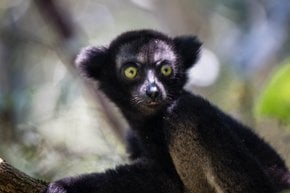The Flying Fox in Singapore 2025-2026
If not for the wings, you might think that this is a real fox hanging upside down from a tree
Best time: November–January
Singapore Zoo provides a shelter for the world's largest species of bats. Although its most common name is the large flying fox it's also known as Malayan or Malaysian flying fox, large fruit bat and kalang or kalong.
In spite of its name, its diet is completely different from that of a real fox. Large flying fox is actually a vegetarian and feeds exclusively on fruits, flowers and nectar. Therefore, it usually inhabits fruit trees. Hence comes its name of a large fruit bat. Flying foxes' weight varies from 0.65 to 1.1 kg, and wingspread reaches 1.5 metres. In the past locals used to trap them, as their meat is quite tasty, however, today they belong to endangered species. The best time to observe the creatures is from November to January during their breeding season.









































































